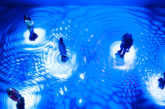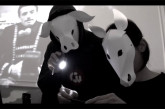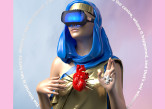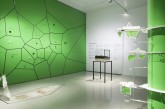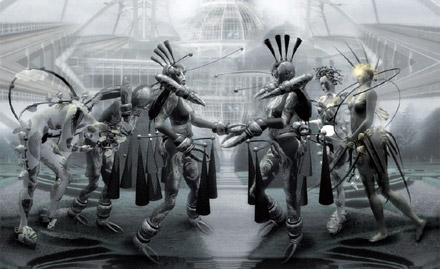
Virtual design concerns itself with artifacts which are purchased and consumed solely within the online, participatory virtual worlds in which they are created: Edward Castronova estimates the revenue generated by current virtual economies, which are based upon the trade of such virtual artifacts to be in the ballpark of several billions of US Dollars per annum. Of further interest is the fact that despite the severe recessions which their physical counterparts have undergone in recent times, virtual economies seem to show a steady upward trend of growth.
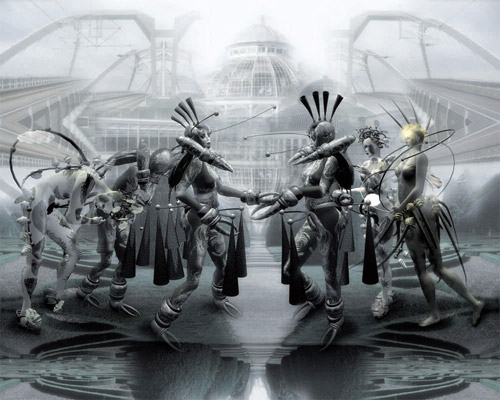
Virtual photography
Costumes by alpha.tribe
Although the present state of health of virtual economies is of significance when examining the relevance of virtual design, what is also of interest is an exploration of virtual artifacts as a mean for establishing cultural bridges. These bridges may manifest themselves not only between virtual worlds and the real world, but also between diverse cultures within the physical world itself. The virtual design object is freed from many of the constraints of its physical counterpart as far as functionality, utility and ergonomics are concerned. Virtual objects are utilized for fantastical, playful activity inside virtual worlds and as such it would be appropriate to examine their ultimate function as the messengers of novel amalgamated ways of being; and indeed as pathways between cultures and cultural identities. While online virtual design manifests in a gamut of objects, ranging from weapons to vehicles to architecture; what is one of the most interesting areas is the creation of costumes and apparel with which the three dimensionally embodied avatars of virtual worlds can be outfitted. Categorized under the heading of virtual fashion design, this area involves the creation of cohesive visual systems evolving around the avatar. Virtual fashion design is created through garment-like textures directly mapped onto the body of the avatar as well as three dimensional, textured, geometric objects attached to the virtual body. Since, the usage of these garments is usually geared towards the fantastical, the unexpected, and the emblematic; more often than not virtual fashion
designers borrow reference material from diverse sources: Mythological imagery as well cultural/historic artifacts are combined with various other visual materials in creating an amalgamation of symbols which yield to novel constellations. These are combined into complex metaphors which make their statement Symbol, Costume, Compass: “Synthetic Apparel” for Transcultural Experiences through many layers and sub-layers of meaning involving trans-culturality, in many different senses of the term. Thus, a thorough decipherment of the field would involve the combination of diverse disciplines such as history, anthropology, mythology, ludology, costume and fashion design, performance arts, computation, as well as media studies. A further rewarding enterprise may be using the design strategies which virtual worlds engender for an investigation of Real Life costume and apparel design from a novel vantage point: Designers of synthetic garments take into account that their creations will predominantly be used as outward projections of concealed aspects of the psyche of the wearer. Thus the production as well as the usage of these garments involves playful investigations, also absorbing a good deal of the far-fetched and the chimerical. Virtual costumes tend to bring together highly disparate components which can range from the mechanical to the biological, as well as the combination of symbols and visual systems from disparate cultures, geographies, and timelines, culminating in the creation of amalgamated systems of attire. As such, the design of synthetic costumes may well prove to be an excellent playground during the conceptual and exploratory phases of Real Life apparel design in that it encourages the designer to approach strategies which are free of the considerations associated with function and utility in the physical realm. Conversely, virtual apparel design demands solutions to problems related to narrative, to symbols, and to metaphor for the construction of costumes which are in the nature of personal as well as cultural hybrid icons. Virtual object design brings forth a novel outlook which nonetheless rests firmly upon previously existent systems of the design fields from which it originally culminates. However, virtual objects find their usage within domains where ethnic and national identities seem to have been supersede by a novel virtual world citizenship and its indigenous sub nations and cultures which transcend traditional national/cultural boundaries whilst defining novel affiliations and coherences. These novel relationships and alliances can be described as transnational and transcultural when viewed from the vantage point of the physical realm. As such, virtual worlds and their object design systems can also be considered as a territory within which transcultural experiences and collaborations can and should be explored.
Elif Ayiter
D’ARS year 50/nr 204/winter 2010

